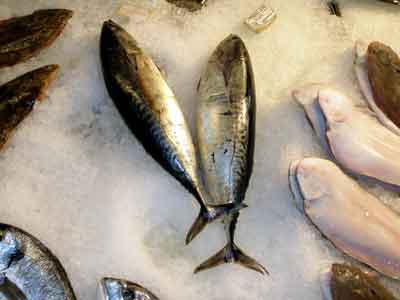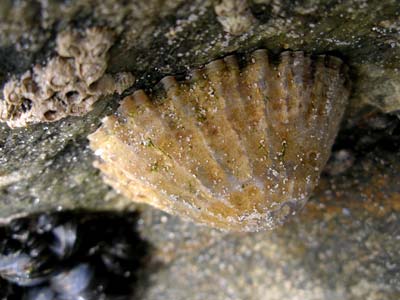Lake trout. A freshwater char living mainly in lakes in northern North America. As in Europe, this char is not a common fish. Lake trout were fished commercially in the Great Lakes until lampreys, overharvest and pollution severely reduced the stocks. Commercial fisheries still exist in some areas of the Great Lakes and smaller lakes in northern Canada.

Little tunny. The little tunny is a handsome fish with black scribble patterns on its back. It has a robust, torpedo-shaped body built for powerful swimming and it has no swim bladder. The mouth is large, the lower jaw slightly protruding past the upper jaw. The flesh of the little tuna is darker and stronger tasting than that of the other large tunas. It is marketed fresh, dried, canned, smoked, or frozen. It is often caught on hook and line near reefs.

Little tunny. The little tunny is a handsome fish with black scribble patterns on its back. It has a robust, torpedo-shaped body built for powerful swimming and it has no swim bladder. The mouth is large, the lower jaw slightly protruding past the upper jaw. The flesh of the little tuna is darker and stronger tasting than that of the other large tunas. It is marketed fresh, dried, canned, smoked, or frozen. It is often caught on hook and line near reefs.

Limpet, a conical, univalve shellfish. These they may be cooked by washing them and then boiling them for about 5 minutes in seawater (or heavily salted water) is recommended. They have a small amount of meat and it is inclined to toughness, like a lot of those things that cling onto rocks. Alternatively the meats can be dug out and used in fish stews or chowders or in sauces to garnish other fish.